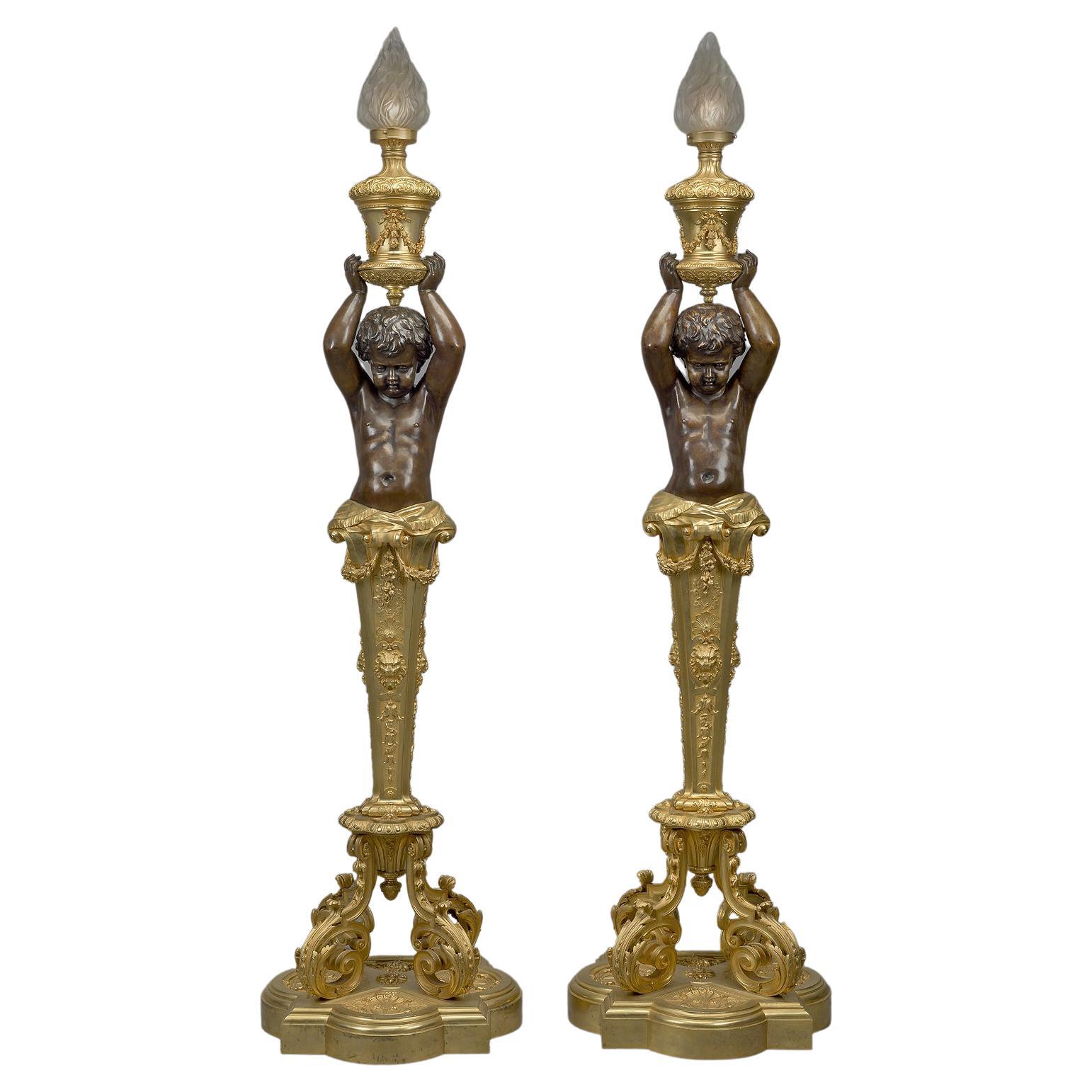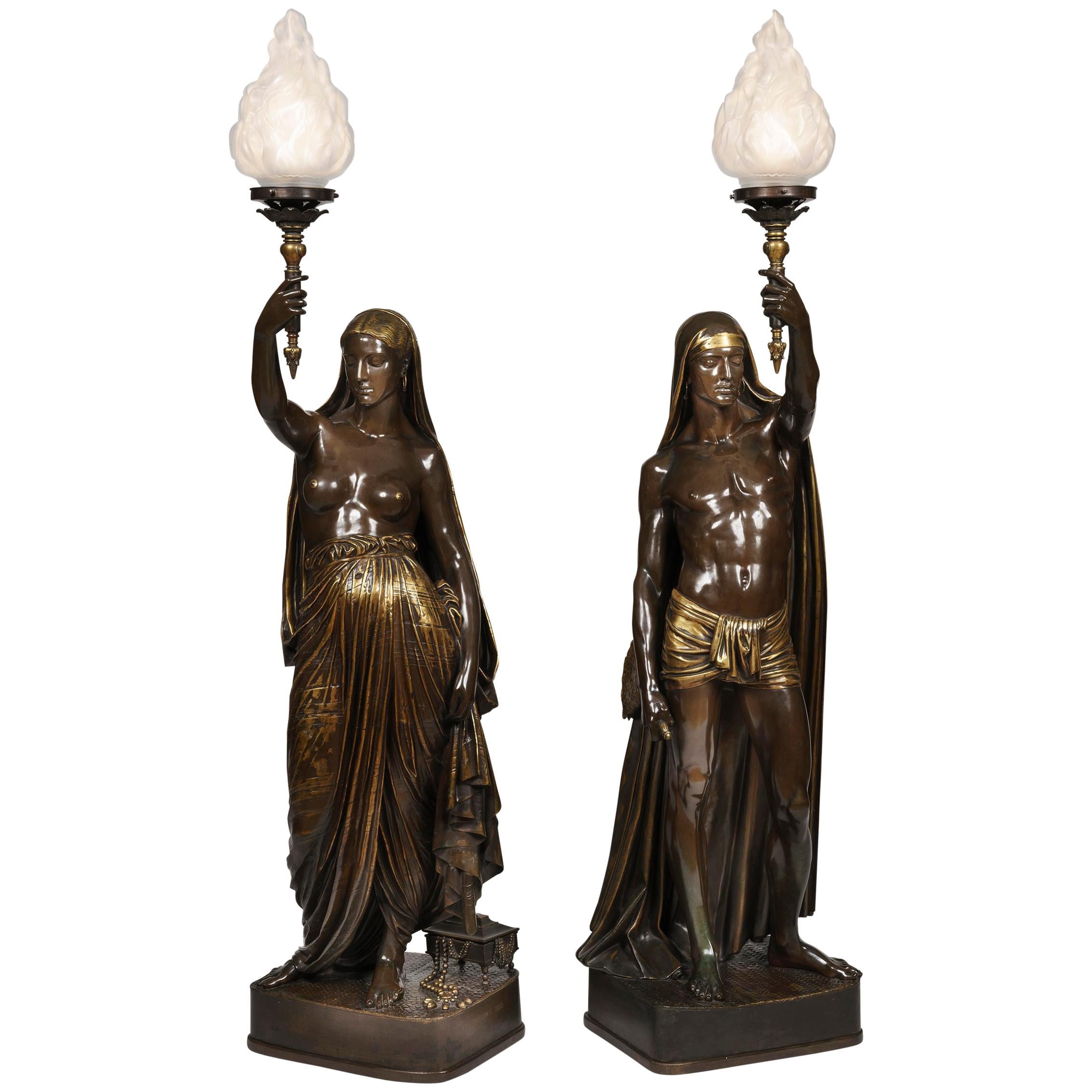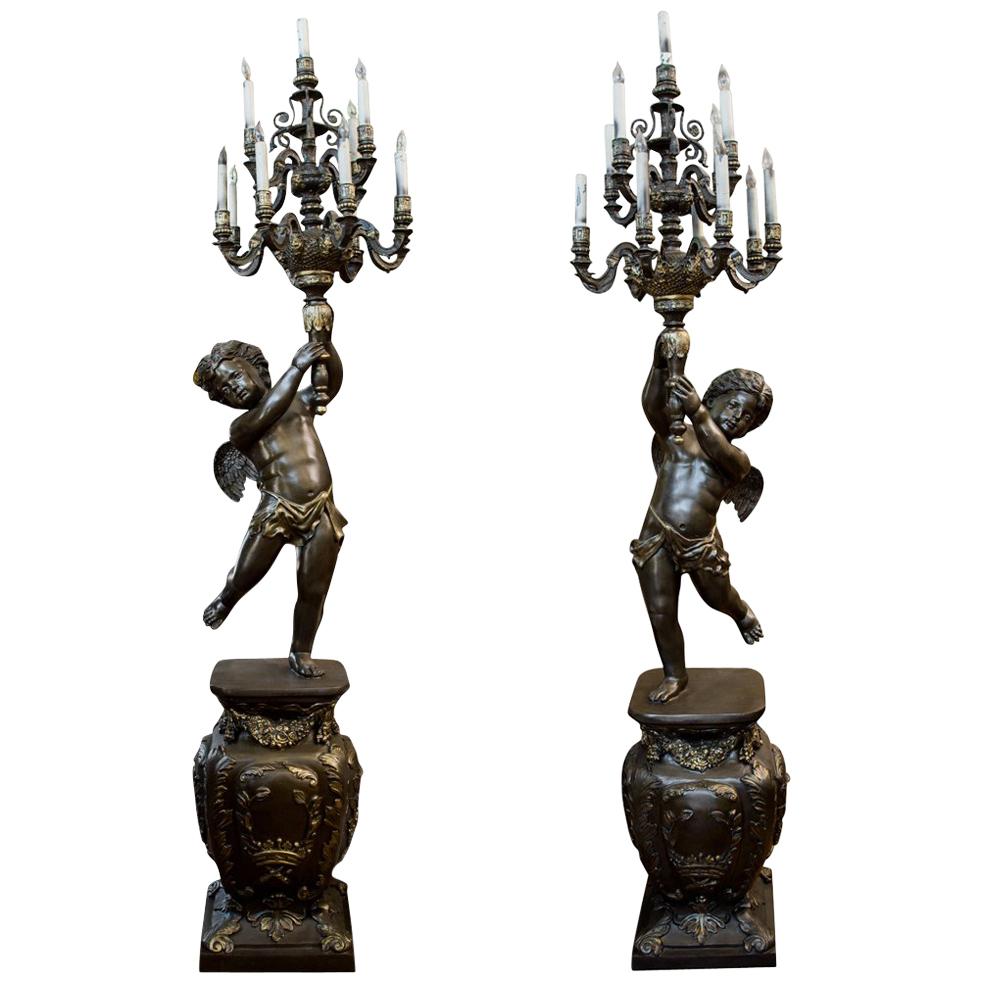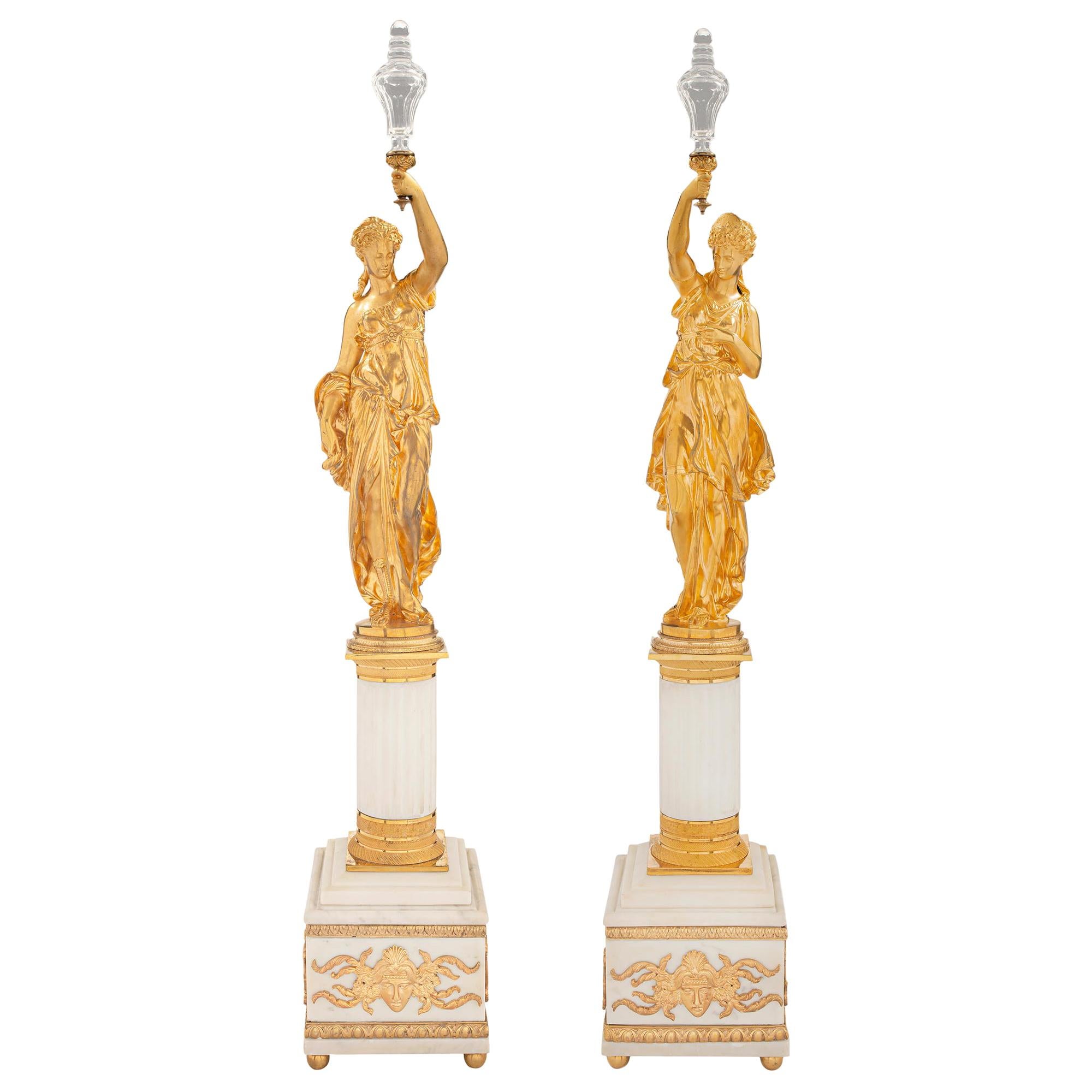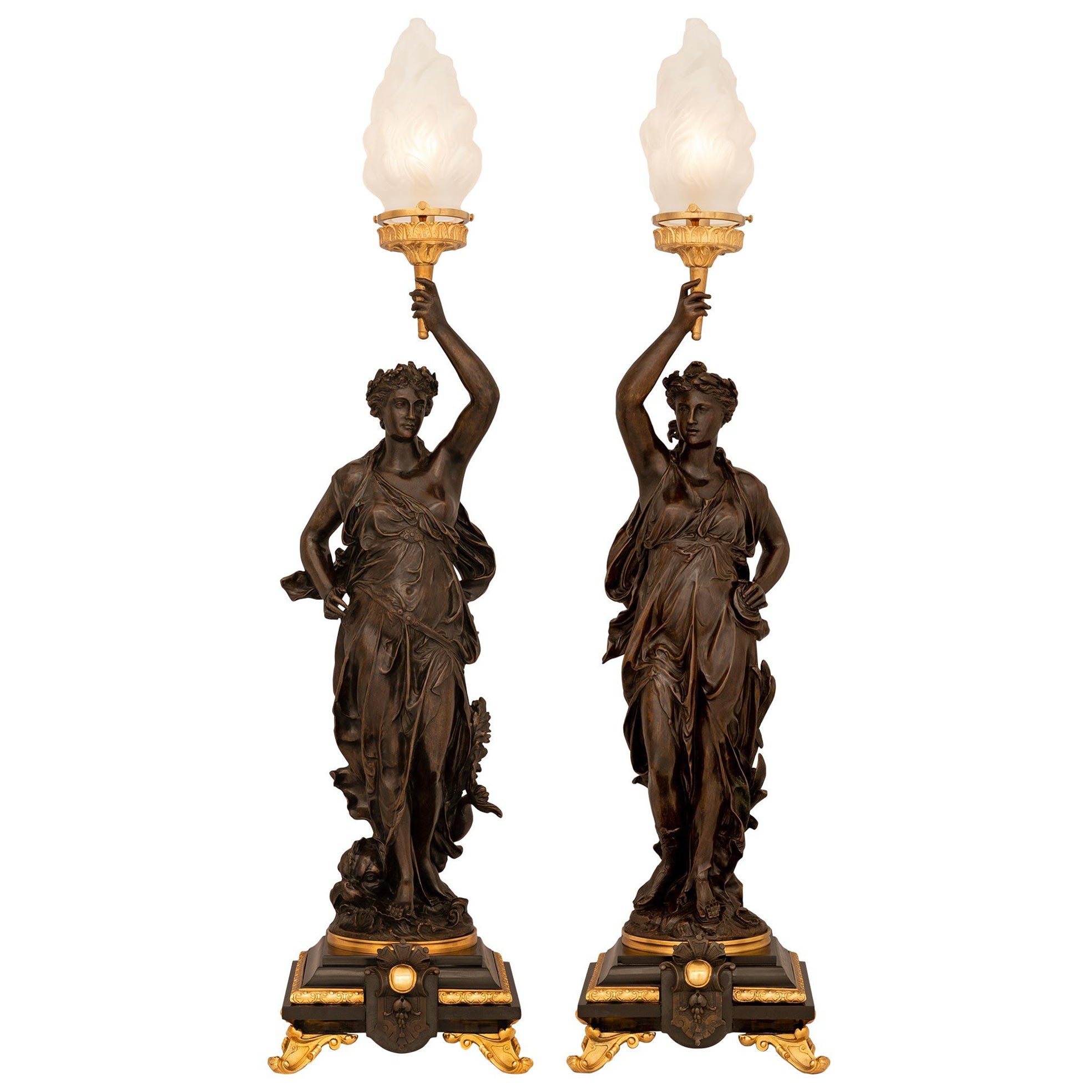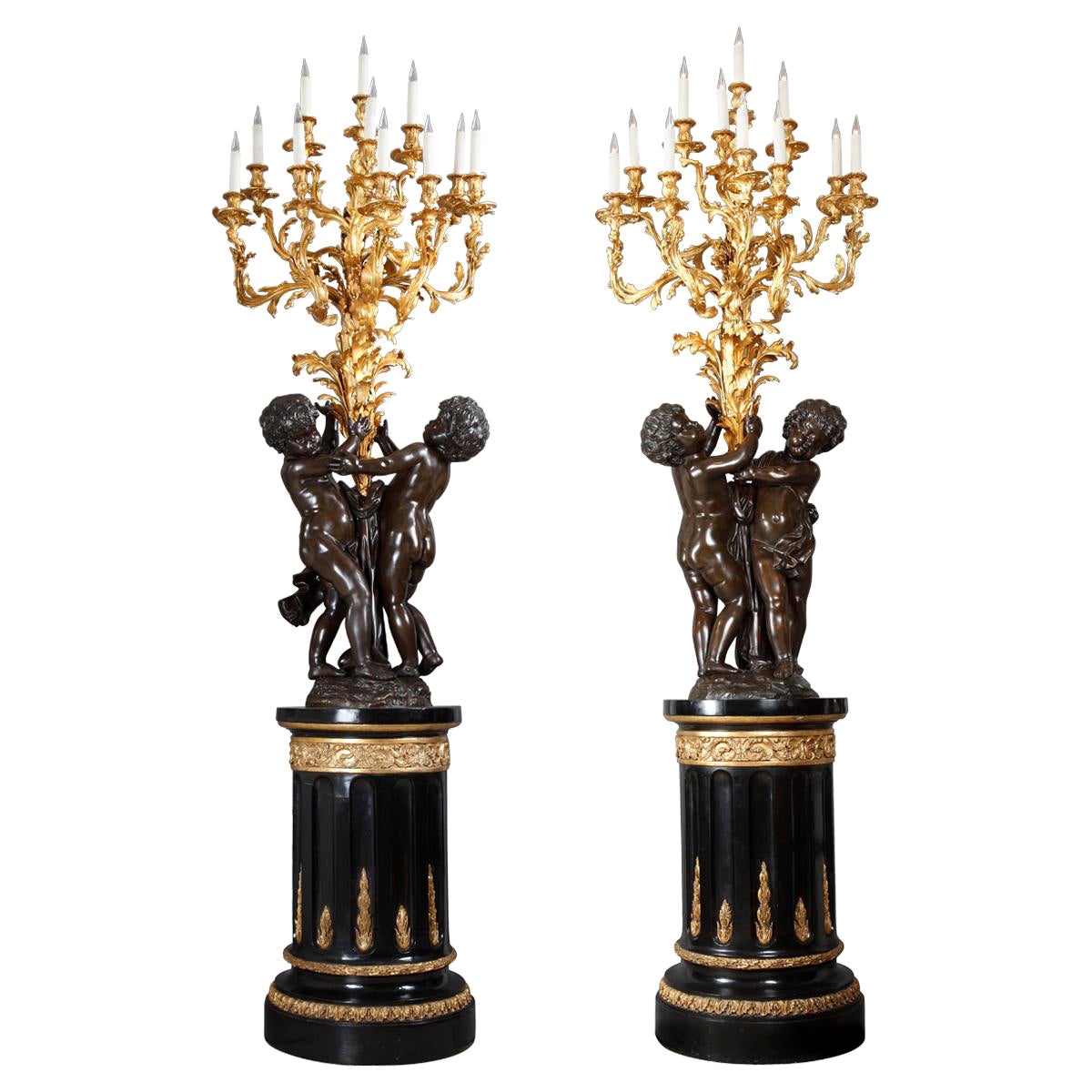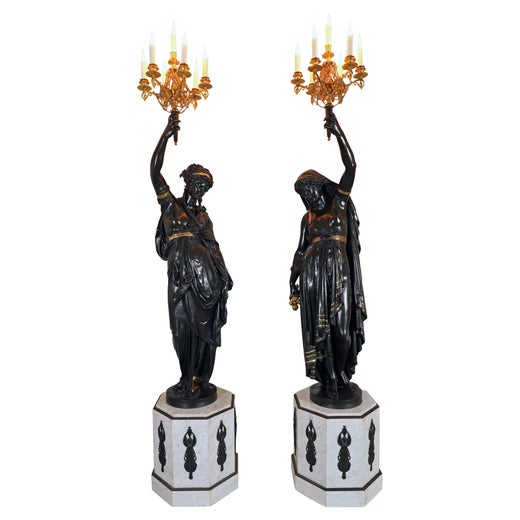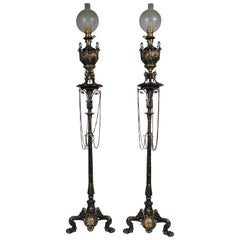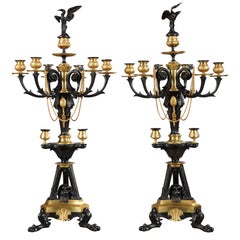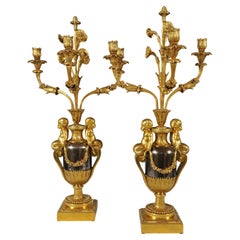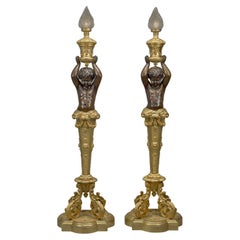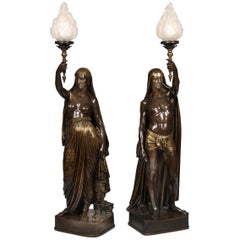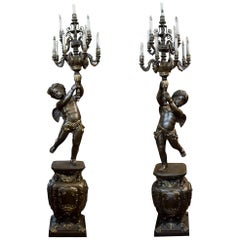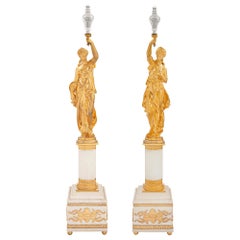Pair of torcheres “Night” & “Day” model by Carrier-Belleuse & E.Colin, 19th C
About the Item
- Creator:Albert-Ernest Carrier-Belleuse (Sculptor),E. Colin & Cie 1 (Metalworker)
- Dimensions:Height: 101.19 in (257 cm)Diameter: 18.9 in (48 cm)
- Sold As:Set of 2
- Style:Napoleon III (In the Style Of)
- Materials and Techniques:
- Place of Origin:
- Period:
- Date of Manufacture:late 19th Century
- Condition:Wear consistent with age and use.
- Seller Location:PARIS, FR
- Reference Number:1stDibs: LU3860344039442
Albert-Ernest Carrier-Belleuse
Albert-Ernest Carrier-Belleuse was a French sculptor. Carrier-Belleuse was born on 12th June 1824 at Anizy-le-Château, Aisne, France. He began his training as a goldsmith's apprentice. He was a student of David d'Angers and briefly studied at the École des Beaux-Arts. His career is distinguished by his versatility and his work outside France, in England between 1850–55 and in Brussels around 1871. His name is perhaps best known because Auguste Rodin worked as his assistant between 1864 and 1870. The two traveled to Brussels in 1871 and by some accounts, Rodin assisted Carrier-Belleuse's architectural sculpture for the Brussels Stock Exchange.
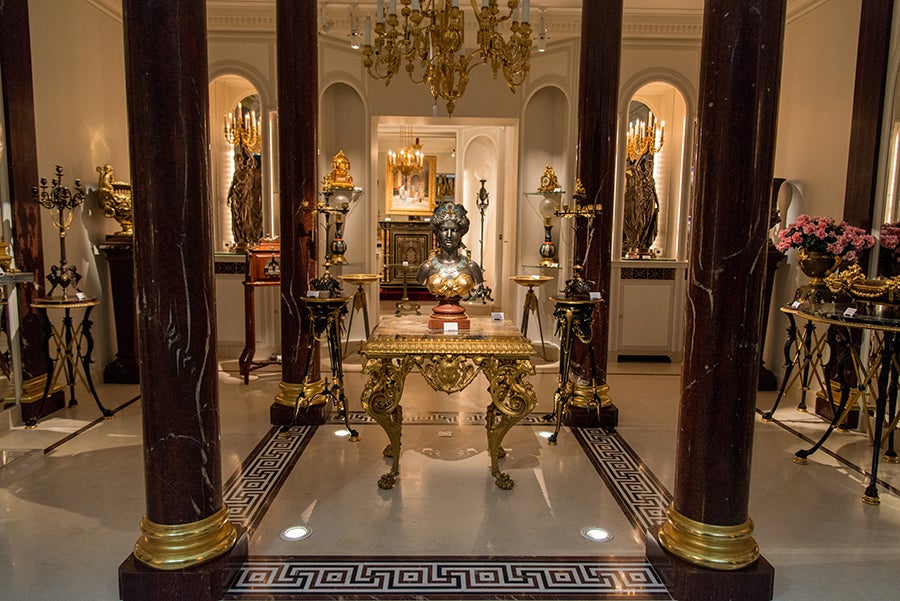
- ShippingRetrieving quote...Shipping from: PARIS, France
- Return Policy
More From This Seller
View AllAntique 1870s French Napoleon III Floor Lamps
Bronze
Antique 1860s French Greek Revival Floor Lamps
Griotte Marble, Bronze
Antique 1870s French Greek Revival Table Lamps
Bronze
Antique 1870s French Napoleon III Candelabras
Bronze
Antique 1860s French Greek Revival Floor Lamps
Bronze
Antique Early 1900s French Chandeliers and Pendants
Bronze
You May Also Like
Antique 19th Century French Napoleon III Floor Lamps
Bronze
Antique Mid-19th Century French Romantic Floor Lamps
Bronze
20th Century French Napoleon III Floor Lamps
Metal
Antique 19th Century French Belle Époque More Lighting
Crystal, Carrara Marble, Ormolu
Antique 19th Century French Louis XVI Table Lamps
Marble, Bronze, Ormolu
Antique 19th Century French Rococo Busts
Bronze
